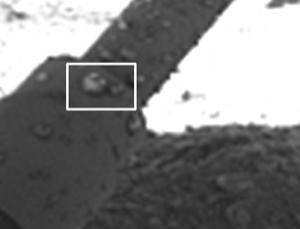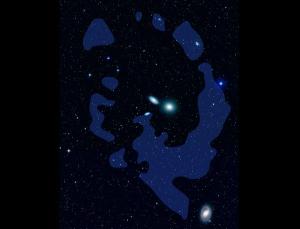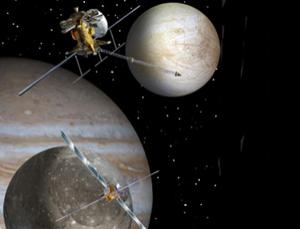
© NASA/JPL-Caltech/University of Arizona/Max Planck InstituteClumps on one of Phoenix's legs were observed to grow over time (see next image for side-by-side pictures).
NASA's Phoenix lander may have captured the first images of liquid water on Mars - droplets that apparently splashed onto the spacecraft's leg during landing, according to some members of the Phoenix team.
The controversial observation could be explained by the mission's previous discovery of perchlorate salts in the soil, since the salts can keep water liquid at sub-zero temperatures. Researchers say this antifreeze effect makes it possible for liquid water to be widespread just below the surface of Mars, but point out that even if it is there, it may be too salty to support life as we know it.
A few days after Phoenix landed on 25 May 2008, it sent back an image showing mysterious splotches of material attached to one of its legs. Strangely, the splotches grew in size over the next few weeks, and Phoenix scientists have been debating the origin of the objects ever since.


